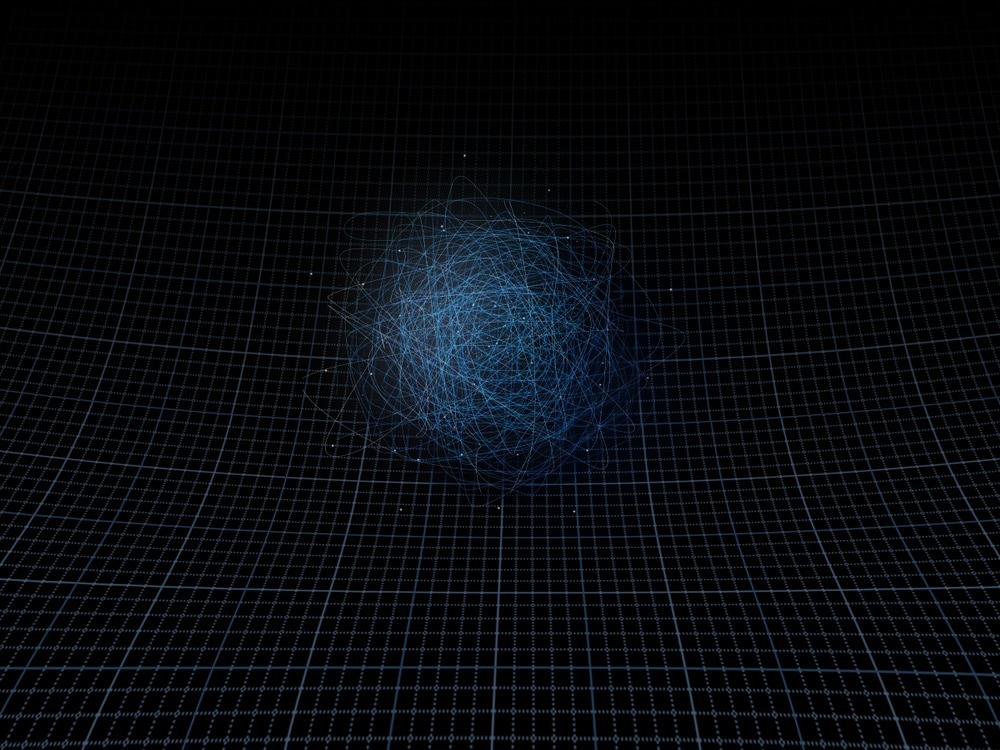Within theoretical physics, the strong force—which binds quarks and gluons to form protons, neutrons, and other hadrons—is described by the field of quantum chromodynamics, or QCD.

Image Credit: AdityaSinha/Shutterstock.com
The physics theory known as quantum chromodynamics (QCD) explains how the strong force acts. The electromagnetic force formulated by quantum field theory, which is referred to as Quantum electrodynamics (QED), was built in analogy to QCD. The emission and absorption of photons, popularly referred to as the massless "particles" of light, represent the electromagnetic interactions of charged particles in QED; these interactions are not possible amongst uncharged, electrically neutral particles.
QED and QCD
According to QED, the photon is the "force-carrier" particle that transmits or mediates the electromagnetic force. Similar to QED, QCD predicts the existence of force-carrying particles known as gluons, which transfer strong forces between matter particles that possess strong "charge," or "color."
Therefore, the strong force's influence is restricted to the behavior of quarks, which are basic subatomic particles, and composite particles made of quarks, including mesons, which are more unusually unstable particles, and the protons and neutrons that constitute the atomic nuclei.
Beginnings of QCD
The idea that color is the reason for a "strong field" was evolved into the theory of QCD in 1973 by American physicist Murray Gell-Mann and European physicists Heinrich Leutwyler and Harald Fritzsch. They specifically utilized the general field theory formulated by Robert Mills and Chen Ning Yang in the 1950s, which states that a force's carrier particles have the ability to radiate other carrier particles. In contrast, in QED, photons carrying the electromagnetic force do not radiate additional photons.
The strong force in QCD is mediated by massless particles called gluons that have a charge known as "color". Quarks, in contrast, have fractional electric charges and come in many "colors." The field equations for gluons and the Dirac equation for quarks make up the mathematical foundation of QCD. These formulas explain the self-interaction of gluons and the dynamics of quarks.
Asymptotic freedom—the idea that quarks and gluons behave almost like free particles at high energies—is one of the most defining aspects of QCD. But at low energies, they are trapped inside hadrons, and we never see a single quark by itself. QCD's foundational idea is confinement, a phenomenon that occurs at low energies.
QCD and the Strong Force
There is only one kind of electric charge in QED, and it can be either positive or negative; this essentially translates to charge and anti charge. In contrast, three separate forms of charge—each of which might arise as color or anticolor—are required to describe quark behavior in QCD.
The three different forms of charge are referred to as red, green, and blue in reference to the fundamental colors of light, although having no actual relationship to color in the traditional sense.
Two types of particles can be neutral in color. The three quarks that make up baryons, which are subatomic particles made up of protons and neutrons, are each a different color, and combining the three colors results in a neutral particle. In contrast, mesons are made up of pairs of antiquarks and quarks, which are the antimatter equivalents of quarks. In these, the antiquark's color neutralizes the quark's color in a similar way to how positive and negative electric charges cancel one other out to create an electrically neutral entity.
Through the strong force, quarks exchange gluons, which are particles. Gluons in QCD contain color charges in addition to photons, which are electrically neutral in QED. Eight gluons are needed to provide for all potential interactions between the three quark colors. Gluons often carry a mixture of one color and an anticolor of a different sort.
Strong force behavior differs slightly from electromagnetic force behavior because gluons, which carry color, can interact with one another.
Although the force described by QED is infinitely strong, it weakens with increasing distance between two charges, following the inverse square law. But in QCD, color charges can't be torn apart because of the interactions between the gluons they release.
Rather, if enough energy is expended, for instance, trying to remove a quark from a proton, the outcome is the production of a quark-antiquark pair, or meson. This feature of QCD represents the strong force's observed short range, which is less than half the radius of an atomic nucleus and limited to a distance of roughly 10−15 meters. It also explains why quarks appear to be contained, as they have only been seen in bound composite states in mesons and baryons such as protons and neutrons.
Summary and Outlook
The comprehension of the strong force which holds atomic nuclei together is greatly aided by QCD. High-energy physics experiments, such those carried out at CERN and other particle accelerators, advance our understanding of particle interactions.
The foundation of particle physics' Standard Model is quantum chromodynamics (QCD), which offers the theoretical framework for explaining the strong force and quark and gluon behavior. It has become a vital tool for comprehending the fundamental particles and their interactions due to its mathematical elegance and predictive potential.
More from AZoQuantum: Understanding IBM's 1000 Qubit Quantum Chip
References and Further Reading
Piotr Szadkowski, Zbigniew. 2021. ‘Introductory Chapter: Quantum Chromodynamic’. Quantum Chromodynamic. IntechOpen. doi:10.5772/intechopen.100356.
Sutton, C. (20 Mar. 2023) "quantum chromodynamics". Encyclopedia Britannica. Available online at: https://www.britannica.com/science/quantum-chromodynamics.
Schmitz, W. (2022). The Strong Force: Quantum Chromodynamics. In: Particles, Fields and Forces. The Frontiers Collection. Springer, Cham. https://doi.org/10.1007/978-3-030-98753-4_18
Disclaimer: The views expressed here are those of the author expressed in their private capacity and do not necessarily represent the views of AZoM.com Limited T/A AZoNetwork the owner and operator of this website. This disclaimer forms part of the Terms and conditions of use of this website.